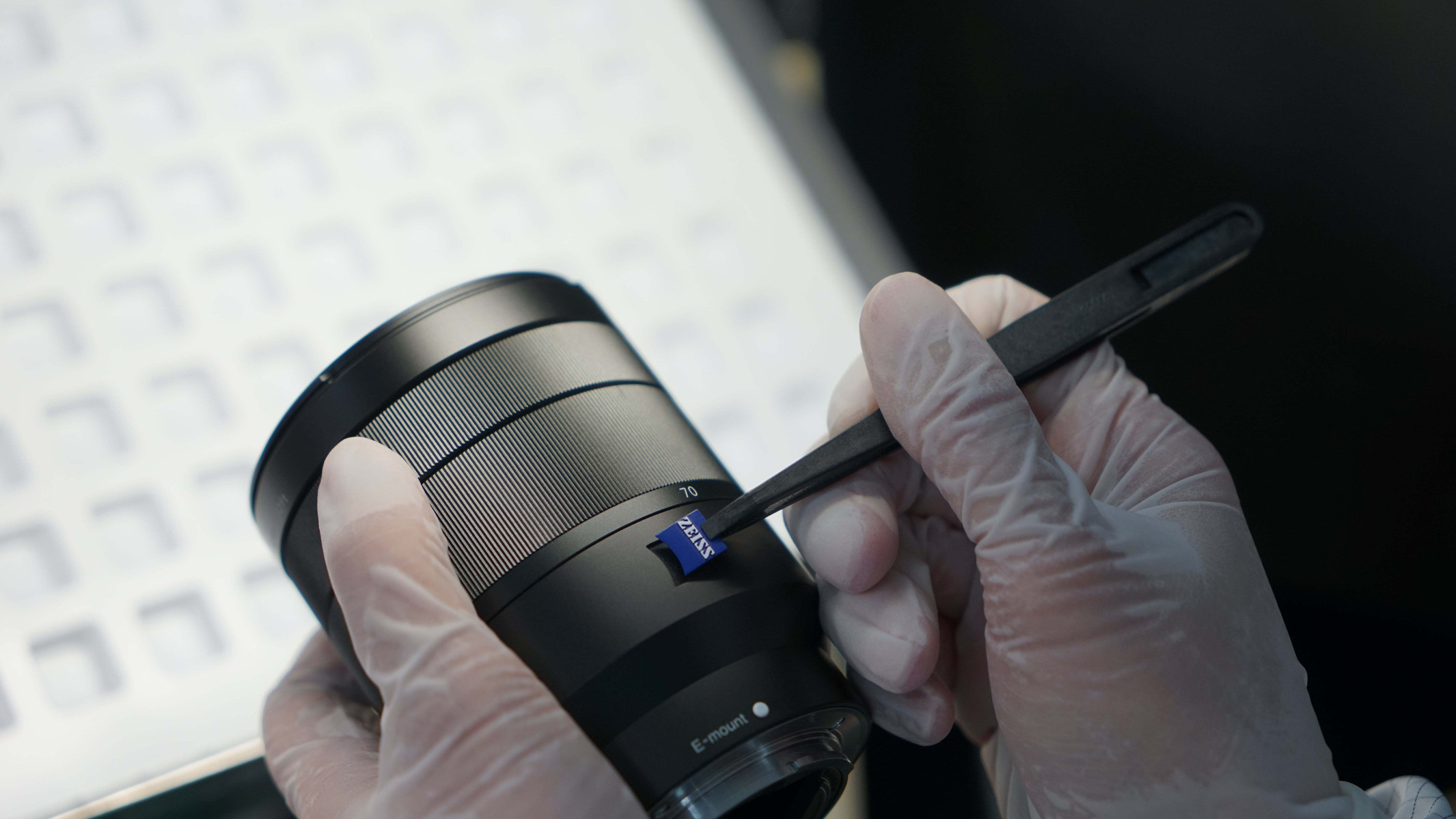Is There a Problem With Modern Lenses?
March 20, 2016In a rather surprising post, Petapixel (the patron saint of aggregated gear-oriented digital photographic clickbait) published (or reposted) an article challenging the photographic orthodoxy, the very orthodoxy that keeps the website in business through advertising.
In this article, photographer Yannick Khong argues the problem with modern lenses is that they have no soul. He attempts to use a slightly more quantitative (and less spiritual) methodological approach to this argument than simply saying modern lenses suck (with limited success, I must say), but in short, he argues that the priorities of modern lens design (super-sharp, correction at maximum aperture, rounded bokeh, “undimensional”) sacrifice artful rendition for technical accomplishment (and good Imatest results). It is worth thinking about this claim and reflecting on your own photographic equipment.
High-ISO capable digital sensors and improving computer aided optical design has produced a series of lenses (such as Zeiss’s weirdly named Otus range, or Sigma’s Art series) that are “no-compromise” optics. Offering highly-corrected designs that capture the maximum possible resolution with the smallest number of optical deficiencies.
But these lenses are arguably “cold and clinical”, with their optical prowess routinely demonstrated through expressions of extreme edge-to-edge sharpness, “persecution” of vignetting and distortion as defects and 100% crops of extreme image edges – areas no photographers have any real reason to be concerned about.
One always gets into trouble when discussing qualitative attributes of various equipment in a field that likes to think of itself as being on the crossroads of art and science. A smattering of the vicious comments on Yannick’s Petapixel post demonstrate this, perhaps hardly unexpected on a digital tech-heavy site, but I think Yannick’s on to something. Perfect optics are not inherently good, and in an era of decline for specialist photographic equipment sales, the absurdly large barrels these designs require arguably make dedicated photographic equipment even less enticing to the iPhoneographer. You may disagree with Yannick about whether these modern optical design priorities are a good or a bad thing, but it can’t be denied that modern lens manufacturers are utterly obsessed with them.
It reminds me of a time when I was working at a camera retailer. An old guy came in with his K1000 and SMC 50mm f/1.4. He either wanted a similar Pentax kit that would take his lens (“Could I interest you in a Samsung GX20, sir?”) or a full frame equivalent. When I pulled out a Canon 5D (version 1) and Sigma 50mm f/1.4 EX DG HSM lens, he was taken aback and not just because of the price tag. How is it, he asked, that a 50mm f/1.4 lens can be so goshdarn big? Was it really that much better than his Pentax SMC lens? Well, sure. It’s designed by a computer. And has a hypersonic motor. And an “EX”, whatever that is.
Fellow photographic retail slaves might accuse me of beating a straw man – a modern autofocus lens and a then-state-of-the-art full-frame digital body bear little resemblance to a 30 year old 35mm SLR – but for this old guy, that didn’t matter. He had captured decades of memories using this simple kit with a great lens and compact camera body. He couldn’t see the value in capturing super-sharp images wide-open at 800 ISO.
The Sigma 50mm f/1.4 EX was an excellent lens and one of the pieces of glass that began Sigma’s rebirth as a lens manufacturer of quality, but I understand the old man’s point. Perhaps for me, the argument is less about super-corrected lenses than it is about super-sized lenses which result from the desire to squeeze a two-dozen corrective elements into what was once a simple compact prime.
In 2016, the photographic landscape is a little bit different. Full-frame digital cameras are cheaper (and smaller) than ever, but the dream of a fast, compact full-of-life optic is not often realised. Take the Sony A7 series. These compact full-frame mirrorless cameras are rightly praised for their form and function. No bigger than the palm of a common-or-garden variety caucasian adult male’s hand, these cameras pick up where 35mm SLRs such as the Pentax K1000 and Olympus OM4 left off: compact and brilliant. But witness the absurdity of one of the cameras’ flagship lenses – the Zeiss-branded Distagon 35mm f/1.4 – weighing more than the camera body…and adding an additional 11.2cm length to the svelte 6cm-deep A7.
Compare that with the classic Nikon FM2, a compact 35mm which could be paired with the full-o’-character Nikkor 35mm f/1.4 AI-s for a total weight of only 900g (sturdy metal construction doesn’t come light, but still comes lighter than modern composites and a plethora of unnecessary glass elements) and depth of only 13cm. For many photographers, this size discrepancy is the difference between taking a camera with you and leaving it at home.
Again, it’s a bit of a straw man I’ll concede, but there is absolutely no reason why a modern digital body and lens should be heftier by all measures than an equivalent 35mm kit. The problem arises with the expectations of market reception. Where the classic Nikkor or Pentax SMC f/1.4 lenses were average performers wide-open at f/1.4, consumers (or at least the marketing teams employed by the manufacturers) demand that modern lenses be tack-sharp at f/1.4, corner to corner. No longer is it seen as reasonable to stop down to achieve sharpness, lenses must perform at every aperture all the time.
Sony can’t merely release an adequate f/1.4 lens, the press releases on Petapixel and DPReview and CNET and Gizmodo and any other number of gear-oriented tech wank websites need to ooze with ODAs (optical design acronyms), world firsts and qualitative superlatives: ”The new 35mm prime lens produces stunning corner-to-corner sharpness – even at maximum aperture – thanks to its advanced optical design with 3 aspherical elements including one Sony advanced aspherical element and a 9-bladed circular aperture…” (Sony press release for the Zeiss Distagon 35mm). Great, but it still weighs more than the camera and, while its optical design may “facilitate handheld shooting indoors in low light”, its form sure as hell doesn’t. Super corrected, super-sized lenses aimed at producing perfect sharpness wide-open in total darkness are the optics du jour and there’s not much we can do about it.
Along with the massive increase in size of optics, there’s also a question of longevity. I could quite happily pop on FleaBay right now, pick myself up a Nikkor 50mm AI-s lens, and be pretty sure it’s going to provide me with many years of future service, depending on its condition. I wonder how many Sony Zeiss Distagon lenses will still be in service in 10 years time, let alone 40? My guess is not many.
There are, of course, plenty of small cameras that produce excellent results, Micro Four Thirds cameras and those with 1” sensors are routinely held up as the sweet spot between camera size and image quality, but no one seems to be able to quite get the compact full-frame camera+lens thing. Neither can most of Petapixel’s readers. One glance at the comments indicates the techwank camera users are unable to see the image for the pixels – one-eyed zealots incapable of conceding a point, personally abusing someone with a contrary opinion before engaging in a round of “I know you are, but what am I?”.
It really comes back to the obsession with perfection and sharpness in the tech-oriented photographic world. I won’t quote Cartier-Bresson on sharpness, but I will recommend you keep his oft-cited quote at the back of your mind at all times. The obsession with Imatest results and DxO metrics tells us little about whether a camera or lens is good for photography. Nikon, for instance, usually beats Canon hands-down in the DxO rankings, yet Canon are still the go-to brand for professional photography.
Is there a place for these perfekt lenses in the marketplace? Sure. Should they be the priority for consumers and manufacturers? Probably not. The obsession with optical perfection isn’t necessarily improving the art, just contributing to the wide-open bokeh-fuelled mayhem that passes for photography these days.
Regardless of what lens you use, they each have a certain optical character that you grow accustomed to (you can pry my Summicron-M 35mm from my cold, dead hands). Older isn’t always better, but sometimes it’s worth the effort. When Dan Mindel ASC, BSC was looking for lenses for a little film called Star Wars: The Force Awakens, director J.J. Abrams asked him to look for 1970s-vintage Panavision lenses to use. Unfortunately vintage optics are not really suitable for today’s film stocks and filmmaking infrastructure. Instead, Mindel asked Panavision to create a set of lenses with vintage optical designs and lens elements and encase them in a modern barrel. The resulting Panavision “Retro C” lenses helped create a visual continuity between the original trilogy and the sequels. You might question whether with super-sharp optics like Panavision Primo lenses Mindel’s effort was worth it, but both he and Abrams seemed to think so. And after seeing the film four times, I tend to agree.
I’m off to yell at clouds now. Bye.



